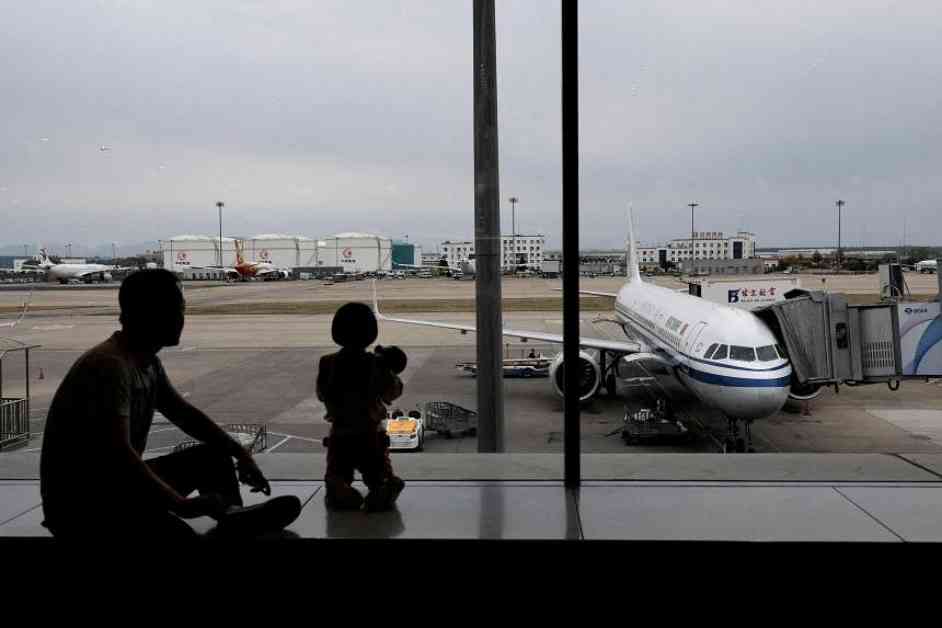The Continued Improvement in Aviation Safety
Flying has long been a source of anxiety for many travelers, but recent data from a study conducted by researchers at the Massachusetts Institute of Technology (MIT) offers reassuring news. The study, published in August, reveals that commercial air travel has become increasingly safe over the years, with the risk of death decreasing significantly with each passing decade. According to the findings, the fatality rate dropped to one per every 13.7 million passenger boardings globally in the 2018-2022 period, marking a significant improvement from the rate of one per 7.9 million boardings in the previous decade from 2008-2017. This trend highlights a remarkable advancement in aviation safety compared to the early days of commercial air travel, where fatalities per passenger were as high as one per 350,000 boardings in the 1968-1977 period.
MIT professor Arnold Barnett, one of the co-authors of the research published in the Journal of Air Transport Management, emphasized the continuous improvement in aviation safety, noting that the chance of dying while flying has been steadily decreasing by a factor of two every decade. Drawing a parallel to Moore’s Law, which predicts the doubling of computing power in chips approximately every 18 months, Barnett highlighted the consistent progress in reducing the risks associated with air travel. The statistics from different time periods further illustrate this positive trend: from 1978-1987, the risk of dying was one per 750,000 boarding passengers; from 1988-1997, it decreased to one per 1.3 million; and in 1998-2007, the rate further dropped to one per 2.7 million.
Challenges and Ongoing Safety Concerns
While the overall data suggests a significant improvement in aviation safety, recent incidents have raised concerns about potential challenges that could impact this positive trend. Despite the lack of major commercial airline disasters in the United States since 2009, recent near-collisions on US runways in 2024 and incidents involving specific aircraft models have drawn attention to ongoing safety issues. For instance, federal investigators have been investigating a case where a door-plug aboard a Boeing 737 MAX 9 aircraft came off mid-flight on an Alaskan Airlines plane in January, prompting questions about the safety measures and protocols in place within the aviation industry.
Dr. Barnett’s cautionary note about the need for continued progress in aviation safety serves as a reminder that complacency is not an option in an industry where vigilance is paramount. The recent incidents underscore the importance of rigorous safety standards and protocols to ensure the well-being of passengers and crew members alike. While the overall statistics show a positive trajectory in reducing air travel fatalities, these isolated incidents highlight the need for constant monitoring and evaluation of safety practices to maintain and enhance the current standards of aviation safety.
Global Disparities in Air Safety
Despite the overall improvement in aviation safety, significant disparities exist globally, with some regions demonstrating higher safety standards than others. The MIT study categorized countries into three tiers based on their safety records, shedding light on the varying levels of safety practices across different regions. The top tier includes countries such as the United States, European Union nations, and other European countries like Montenegro, Norway, Switzerland, and the United Kingdom, along with Australia, Canada, China, Israel, Japan, and New Zealand. These countries have consistently maintained high safety standards in aviation, reflecting their commitment to ensuring the safety of air travel for passengers.
The second tier comprises countries like Bahrain, Bosnia, Brazil, Brunei, Chile, Hong Kong (distinct from China), India, Jordan, Kuwait, Malaysia, Mexico, the Philippines, Qatar, Singapore, South Africa, South Korea, Taiwan, Thailand, Turkey, and the United Arab Emirates. While these countries have made strides in improving their aviation safety records, they still face challenges in addressing certain safety concerns and enhancing their safety protocols to meet the standards set by top-tier nations. The third tier includes countries where the risk of flying is significantly higher, underscoring the need for targeted efforts to enhance safety measures and reduce the incidence of air travel fatalities.
Conclusion
In conclusion, the MIT study’s findings offer a glimpse into the evolving landscape of aviation safety, showcasing the significant strides made in reducing the risks associated with air travel. While the data indicates a positive trend in decreasing air travel fatalities globally, recent incidents and disparities in safety standards across different regions underscore the importance of continuous improvement and vigilance in the aviation industry. By maintaining a steadfast commitment to safety protocols, monitoring for potential risks, and implementing rigorous safety measures, the aviation sector can build upon its current achievements and further enhance the safety of air travel for passengers worldwide. The ongoing collaboration between industry stakeholders, regulatory bodies, and researchers will be crucial in ensuring that the skies remain safe for all those who choose to embark on the journey of flight.
